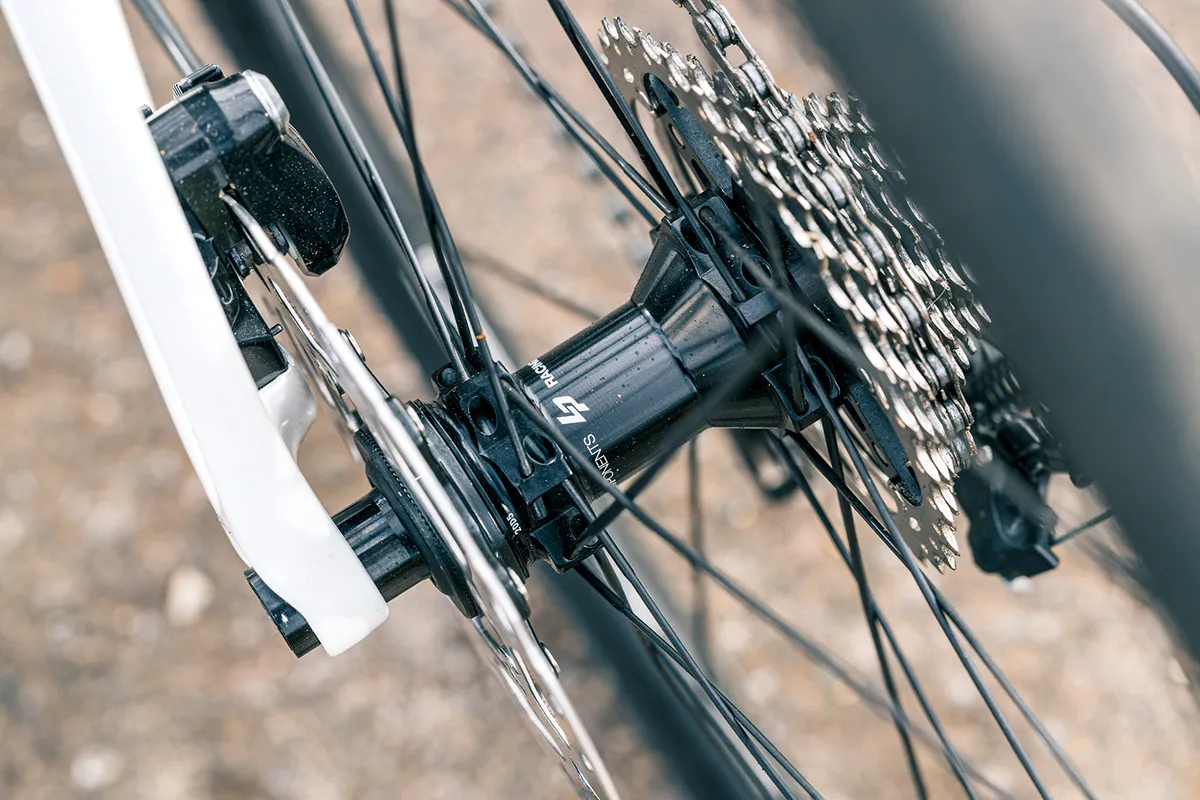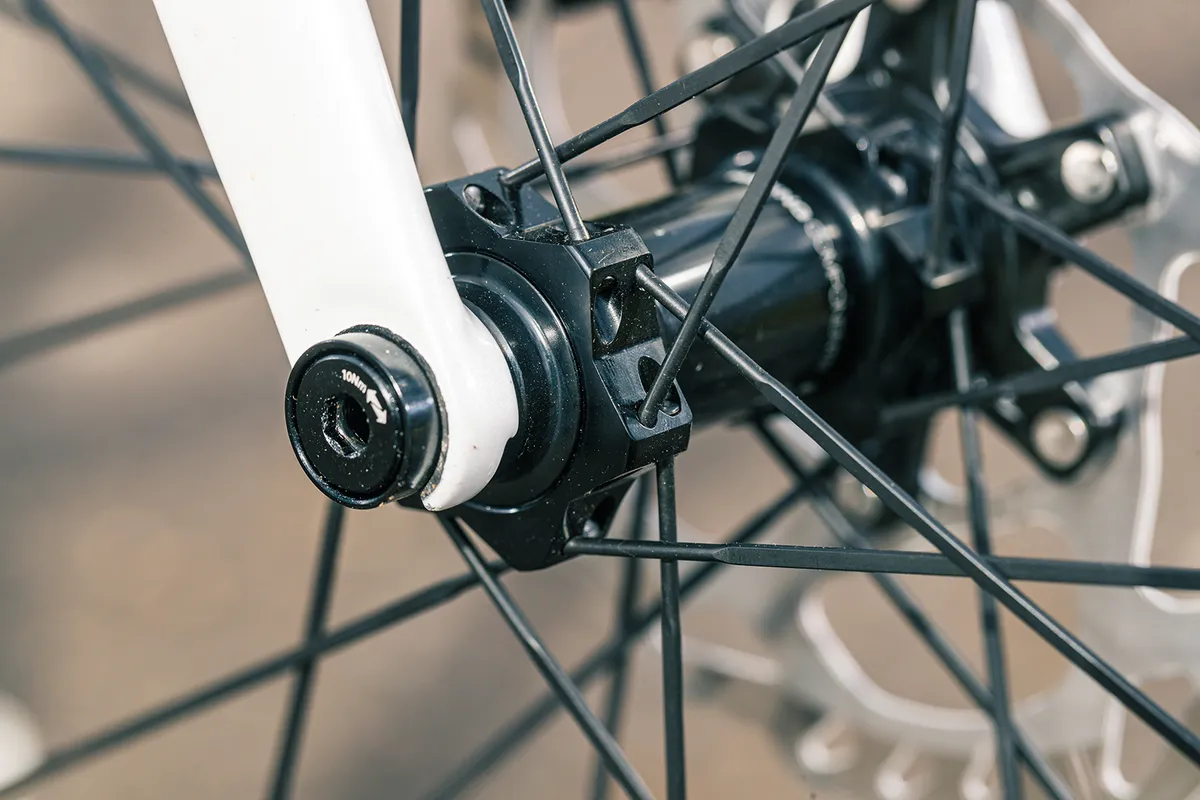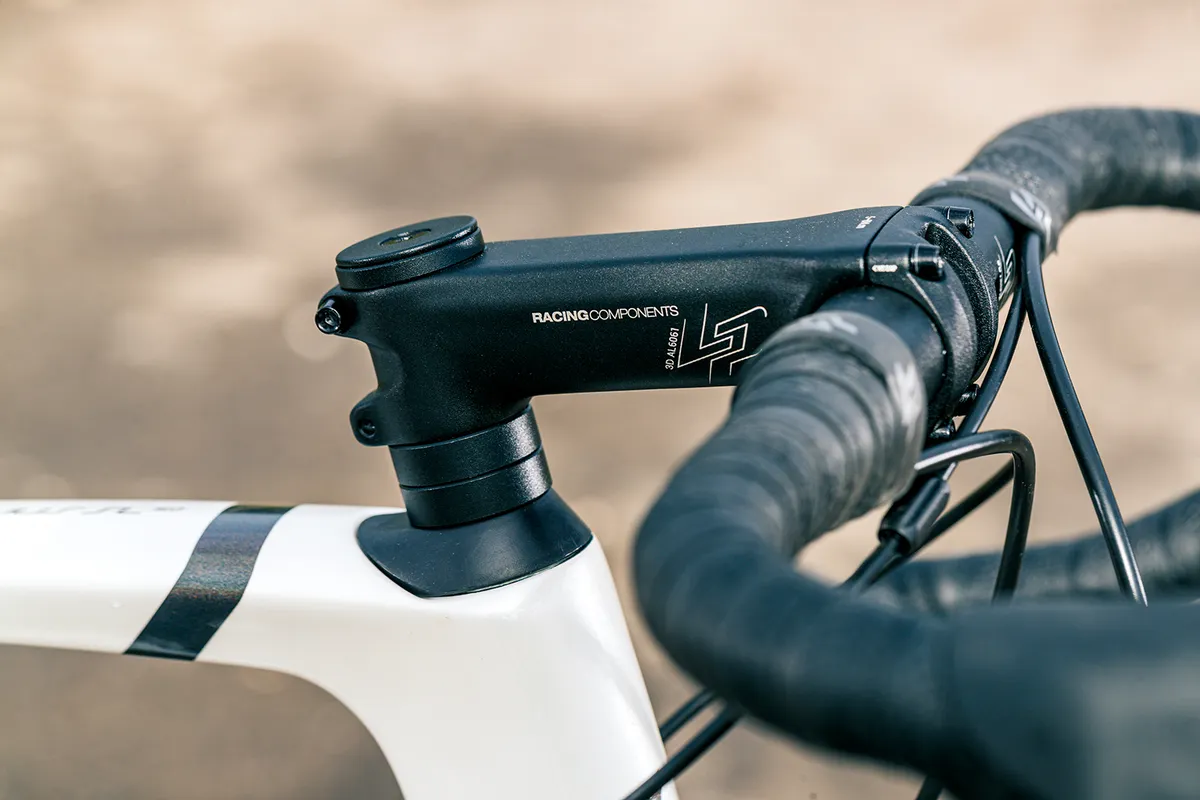The Xelius has long been a mainstay in Lapierre’s range – its triple-triangle frame has been ridden by the Groupama-FDJ pro team since 2009. From its original inception, the Xelius was intended as an all-round race bike with a focus on climbing.
The chassis of 2009’s Xelius Ultimate tipped the scales at under 800g, which is still impressive in 2021 – in fact, this latest Xelius frame weighs between 900g and 1kg depending on size.
Lapierre Xelius SL Disc 5.0 frame
The latest incarnation has added more details beyond just weight to the design party. The SL incorporates aero elements from Lapierre’s other pro-tour level machine, the Aircode DRS, so the frame’s tube shapes have been tweaked for aerodynamic optimisation.
The down tube has a near kammtail-like shape (a truncated airfoil like the cross-section of an aircraft wing designed to ‘cheat’ the air into acting like the tail is still there, which reduces drag because it doesn’t create a disruptive ‘wake’).
The fork also has aero-shaped legs that bow outwards (Pinarello uses a similar design trick on its F-series bikes), with the idea being to keep the fork legs out of the path of the disrupted air coming from the spinning wheel.
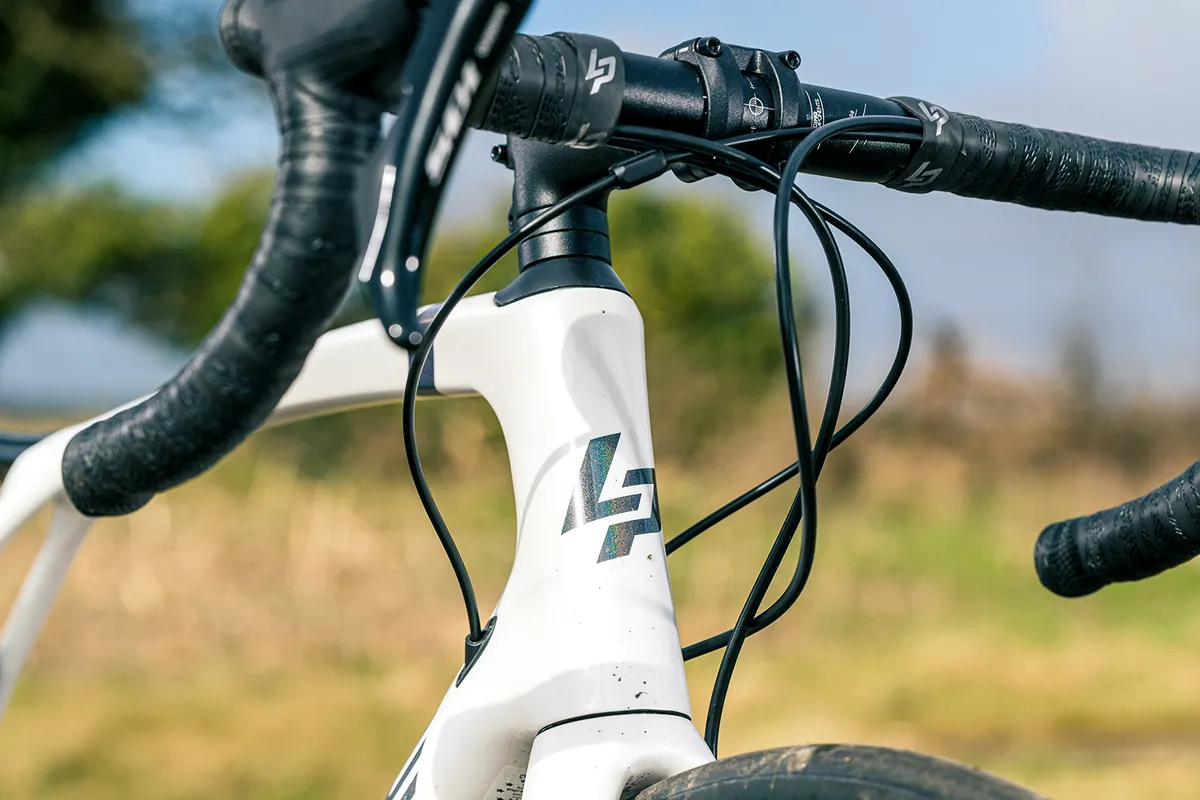
The back end of the bike is where the really interesting stuff is happening, though. The triple-triangle frame shape was first seen as a key element on GT’s bikes. Lapierre’s shape combines an arched/bowed seatstay, which bypasses the seat tube entirely and affixes to the top tube.
The seat tube itself flattens towards the bottom bracket to smooth out vibrations. The result is a bike that feels so buttery smooth over the worst road surfaces that, if it weren’t for sporty geometry, I’d have sworn I was riding Lapierre’s take on an endurance machine.
Lapierre Xelius SL Disc 5.0 geometry
As for the frame geometry, the Xelius is quite aggressive, with a low stack of 557mm and a mid to long reach of 394mm.
The 73-degree head angle and 72.5-degree seat are classic race-bike numbers. The Xelius rides with a welcome lightness of touch and the steering only requires the subtlest of inputs – a very well-balanced bike is the overwhelming result.
Lapierre has adopted the user-friendly Speed Release thru-axle, which make switching a wheel a quick and clean operation, though strangely the wheels don’t come with compatible hubs – that’s reserved for Xelius models further up the range.
| | XS | S | M | L | XL |
|---|---|---|---|---|---|
| Seat angle (degrees) | 74 | 73 | 73 | 72.5 | 72 |
| Head angle (degrees) | 7 | 72 | 73 | 73 | 74 |
| Seat tube (cm) | 46 | 49 | 52 | 55 | 58 |
| Top tube (cm) | 52 | 53.5 | 55 | 57 | 59 |
| Head tube (cm) | 10.5 | 12 | 14 | 16 | 18 |
| Bottom bracket drop (cm) | 6.7 | 6.7 | 6.7 | 6.7 | 6.7 |
| Stack (cm) | 50.1 | 51.6 | 53.8 | 55.7 | 58 |
| Reach (cm) | 37.6 | 37.7 | 38.5 | 39.4 | 40.2 |
Lapierre Xelius SL Disc 5.0 ride impressions
The responsiveness of the Xelius SL makes up for its modest overall weight and middleweight wheels, to the extent that this doesn’t feel like a bike that’s closer to 9kg than the range-topping bike’s UCI limit-baiting weight (6.8kg).
Combined with the solid bottom bracket, the frame’s smoothness is exceptional on climbs, though it feels better seated than the out-of-the-saddle stomp of the Cannondale SuperSix EVO Carbon 105 or Giant TCR Advanced 1+ Disc.
The wheels may be middleweight, but they roll well. Mavic’s Open rims are exceptional and Mavic is still the best in the business when it comes to alloy rims. The hoops are shod with the same Continental Ultra Sport rubber as Basso's Venta Disc 105 and the same praise is heaped on them here.
The Xelius also runs Shimano’s brilliant workhorse groupset, 105. The shifting is crisp and the 50/34 chainset and 11-30 cassette offers plenty of range.
The 105 hydraulic discs provide progressive braking and I like that Lapierre has upped the front rotor to a 160mm for more power, with a 140mm at the rear.
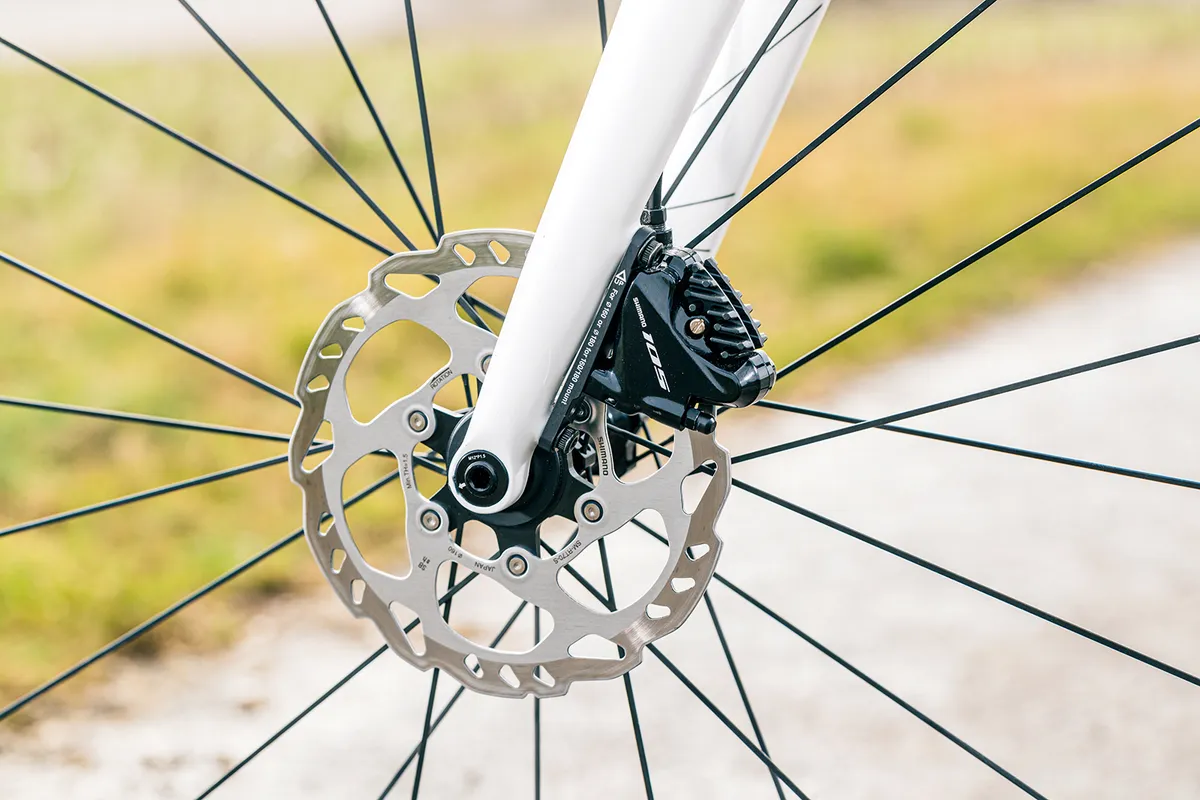
The RT70 105 level rotors come under Shimano’s Ice-Tech banner as they’ve been designed to reduce surface temperature and dissipate heat quickly. They look basic compared to the Ice-Tech on Ultegra and Dura-Ace, but they work well and aren’t noisy.
The handlebar is a rather standard shape with a mid-height drop and round profiled tops. It’s a little narrow for the bike’s size, which aero-focused riders may appreciate, but I found it verging on cramped.
The Selle Italia X3 saddle in a shortened Boost model is well-shaped but firm, but the waxy covering doesn’t offer the greatest purchase when riding in wet conditions.
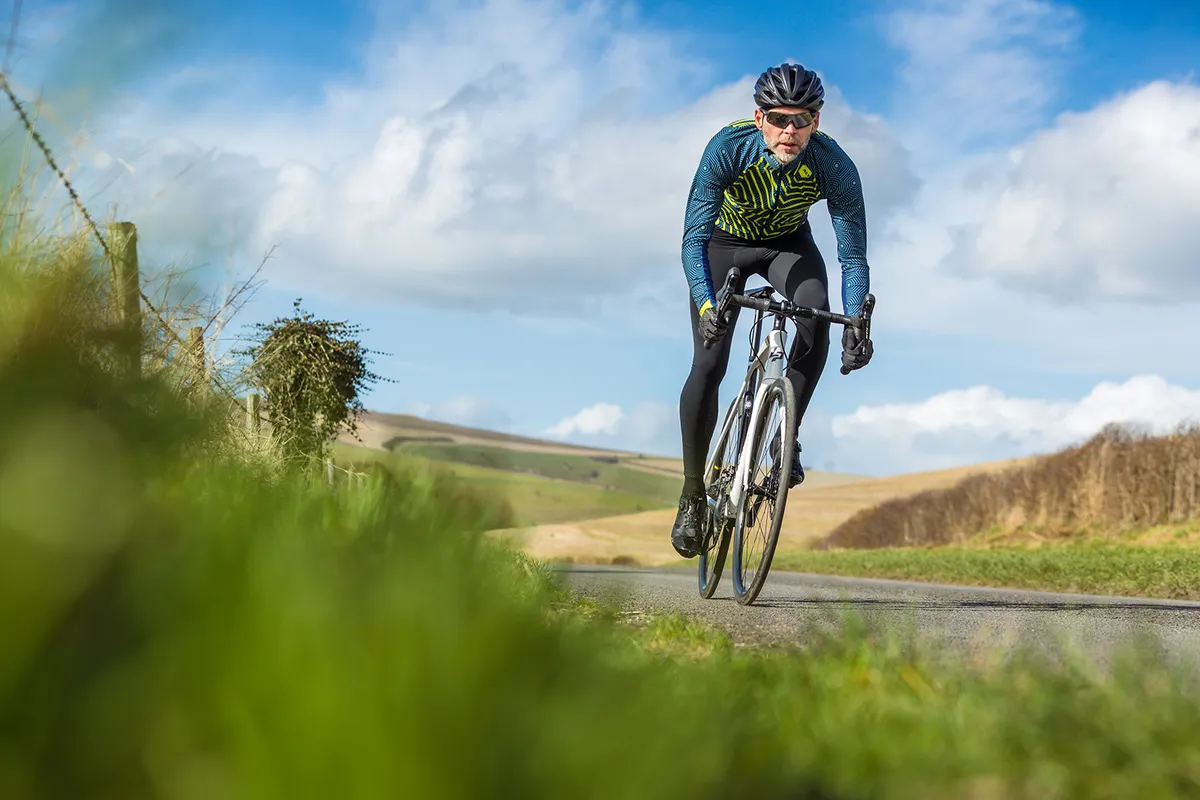
Lapierre Xelius SL Disc 5.0 bottom line
Overall, the Xelius is a superb bike. It blends a smooth ride with swift and accurate handling to create an exciting ride at a good price.
Plus, its distinctive design means it stands apart from the aero tubed, dropped-seatstay trend that’s so prevalent among 2021’s new bikes.
How we tested
Spending up to three grand on a bike is a big deal, and there’s a huge range of performance bikes at this most competitive of price points. So we’ve picked four contenders that we think bring style and superbike levels of performance for under £3,000 and are worth your consideration.
All of the bikes were tested head-to-head on our local loops, climbs and descents.
Also on test
Product
| Brand | lapierre |
| Price | 2699.00 EUR,2549.00 GBP |
| Weight | 8.8400, KILOGRAM (L) - |
Features
| Fork | Carbon |
| br_stem | Lapierre alloy |
| br_chain | Shimano HG601 |
| br_frame | Carbon |
| Tyres | Continental Ultra Sport 3 SL 28c |
| br_brakes | Shimano 105 hydro |
| br_cranks | Shimano 105 50/34 |
| br_saddle | Selle Italia X3 boost |
| br_wheels | Mavic Open disc rims on Lapierre hubs |
| br_headset | FSA Orbit |
| br_shifter | Shimano 105 |
| br_cassette | Shimano 105 11-30 |
| br_seatpost | Lapierre alloy |
| br_handlebar | Lapierre alloy |
| br_bottomBracket | Shimano Press Fit |
| br_availableSizes | XS, S, M, L, XL |
| br_rearDerailleur | Shimano 105 |
